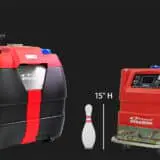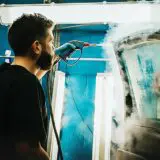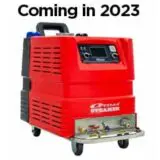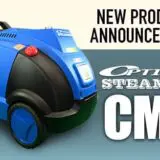Grainger Customers, Corporate, Group & Government Buyers - Learn about Wholesale Purchasing
-
Need Help? Get Support
-
Phone: 844-877-8326
Power Requirements
Power Requirements By Model
Determining Your Power Source
Industrial All-Electric Steamers. If you are wanting to purchase an all-electric steamer, the power you have at your facility may be a deciding factor. Most (but not all) of our industrial all-electric steam machines require 3-phase power and voltages of 230V or higher, which means they won’t be “mobile” as they cannot be powered with a typical generator.
Single Phase Steamers. If you don’t have 3-phase power (or don’t know what it is), but you’re set on an all-electric steamer, we offer the Optima XE 5K which requires 230 volt power (208~240v) and a 60 amp breaker. It is possible to power these steamers with higher wattage/amperage generators.
Mobile Commercial/Industrial Steam. If you are looking to bring industrial-grade steam with you to the jobsite, the Optima XD is the right solution for you and the preferred choice for most customers. It requires a low watt/amp standard power supply that can be run off of an inverter/generator, and uses diesel to power its low-emissions burner that creates the steam.
If you are interested in one of our 3-phase, all-electric industrial steamers and aren’t certain about what power configuration is available at you facility, we recommend speaking to the building owner and/or a facility electrician. For an accurate recommendation of what model steamer you can run, you will ultimately need to know the voltage that is available, whether it is 3-phase power, and what size breaker is available to dedicate to running this machine. If your building doesn’t have the correct voltage or a large enough dedicated breaker, you may end up needing to hire an electrician and it may require contacting your local electric utility company.
References
3-phase (3ph, three phase). Put simply, this is voltage supplied in 3 separate lines that, when combined, provide the target voltage with lower amperage. This type of power can often be found in industrial buildings that have manufacturing equipment or anything that powers larger motors. It is not common to have this power at retail or residential facilities, which would likely require work to be done by an electrician in coordination with the local power company. When talking about Alternating Current (A/C), a “phase” describes the voltage moving from one pole or source to another. With 3 phase, there are 3 wires and 3 phases (think of the 3 points and 3 sides of a triangle).
Single phase (1ph). This is what is commonly thought of when describing A/C. Most power plugs will have 2 “live” wires/prongs which are powered or “hot” and a ground for safety. The 2 live wires alternate current back and forth between each other, a.k.a. a phase (think of a single line that connects 2 points).
Wattage. This describes the amount of power being used. When talking about all-electric steamers, it is almost synonymous with the steamers’ strength, or the amount of heat it creates.
Amperage. This electrical term can also be called “current”. Usually amperage is associated with a circuit breaker box or fuses. Higher power requires more amperage.



